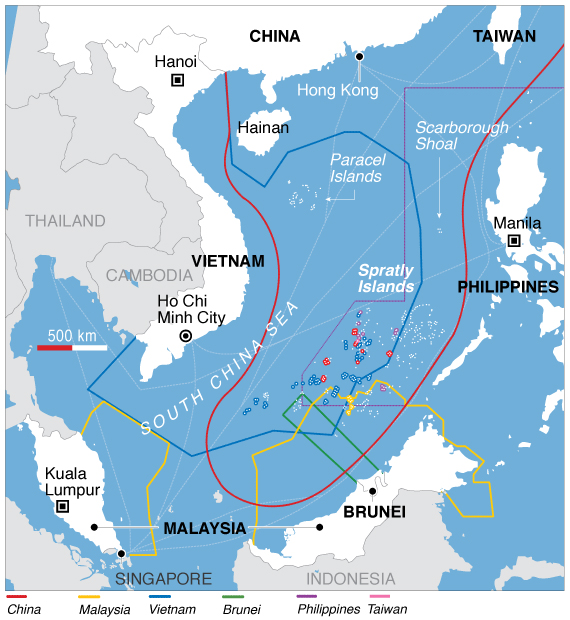Background
Over the past few years, China has begun to transition away from its ‘peaceful rise’ strategy, which called for fostering an international environment that’s amenable to economic expansion; or in other words, not rocking the boat of the prevailing US-led order in East Asia. A centerpiece of this policy shift has been to push the PLA Navy’s advance defense perimeter out from the coastline and towards the ‘first island chain’ (spanning down from Kyushu Island in Japan, east of Taiwan, and all the way to the western coast of Malaysia). There are two keys to the successful realization of Beijing’s maritime goals: controlling Taiwan, and expanding into the waters of the South China Sea.
Taiwan being the intractable dilemma it is, it’s no surprise that the authorities chose to start with the South China Sea. Broadly speaking, China has adopted a two-pronged strategy: to unilaterally change the situation on the ground in a way that strengthens its claim to area, and to deal with other claimants on a strictly bilateral basis, outside the jurisdiction of any multilateral forum that could allow for their grouping up against China (ASEAN or the United Nations, mainly).
China has been strengthening its claim to the area through a controversial island-building program whereby tons of sand are dumped onto preexisting reefs, allowing for the construction of new military and civilian facilities. Construction is taking place at a variety of sites, including Hughes, Johnson South, McKennan, Gavin, Subi, Mischief, and Fiery Cross reefs. The most ambitious construction thus far is taking place at Fiery Cross Reef, where a runway was completed in September 2015 and several flights have recently landed, prompting angry responses from the Vietnamese government. Fiery Cross will likely serve to project the basing of China’s local maritime patrols outward from Hainan Island at the northern end of the South China Sea.
Beijing’s strategy is to build up its military infrastructure and expand patrols throughout the entirety of the South China Sea Nine-Dash Line area, such that even if rival claimants (Vietnam, Malaysia, Philippines, Taiwan, Brunei) receive international or judicial validation for their claims, the ‘court of realpolitik’ will already have decisively ruled in China’s favor.



